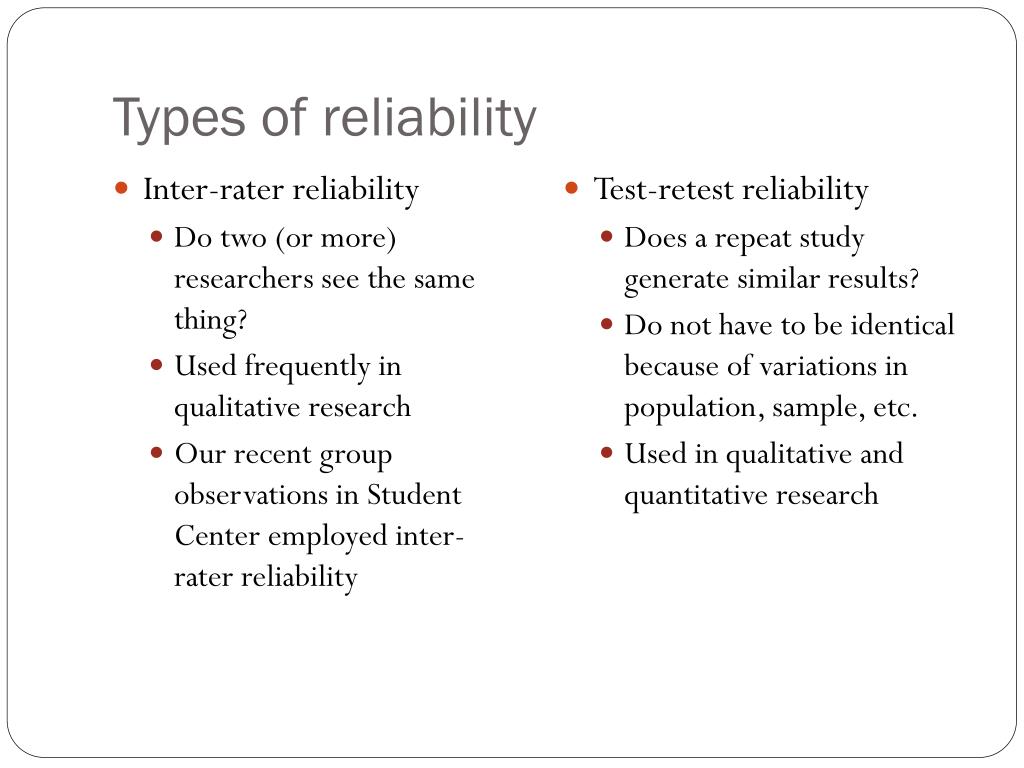

Equivalency reliability is determined by relating two sets of test scores to one another to highlight the degree of relationship or association. For researchers, four key types of reliability are: Equivalency ReliabilityĮquivalency reliability is the extent to which two items measure identical concepts at an identical level of difficulty. Reliability is such an important concept that it has been defined in terms of its application to a wide range of activities. In addition to its important role in research, reliability is critical for many parts of our lives, including manufacturing, medicine, and sports. Without the agreement of independent observers able to replicate research procedures, or the ability to use research tools and procedures that yield consistent measurements, researchers would be unable to satisfactorily draw conclusions, formulate theories, or make claims about the generalizability of their research. Reliability is the extent to which an experiment, test, or any measuring procedure yields the same result on repeated trials. (also referred to as divergent validity)įace validity is a measure of how representative a research project is ‘at face value,' and whether it appears to be a good project.These related research issues ask us to consider whether we are studying what we think we are studying and whether the measures we use are consistent.

Predictive validity is a measure of how well a test predicts abilities.Concurrent validitymeasures the test against a benchmark test and high correlation indicates that the test has strong criterion validity.

Criterion ValidityĬriterion Validity assesses whether a test reflects a certain set of abilities. Test validity is an indicator of how much meaning can be placed upon a set of test results. “Could there be an alternative cause, or causes, that explain my observations and results?” Test Validity Internal validity is a measure which ensures that a researcher's experiment design closely follows the principle of cause and effect.


 0 kommentar(er)
0 kommentar(er)
